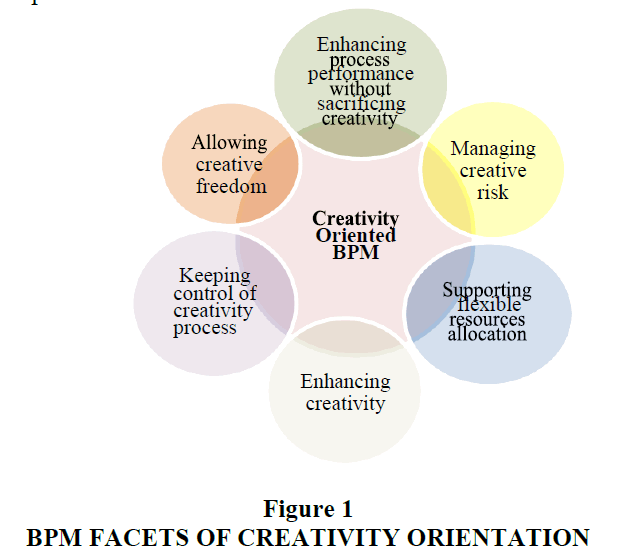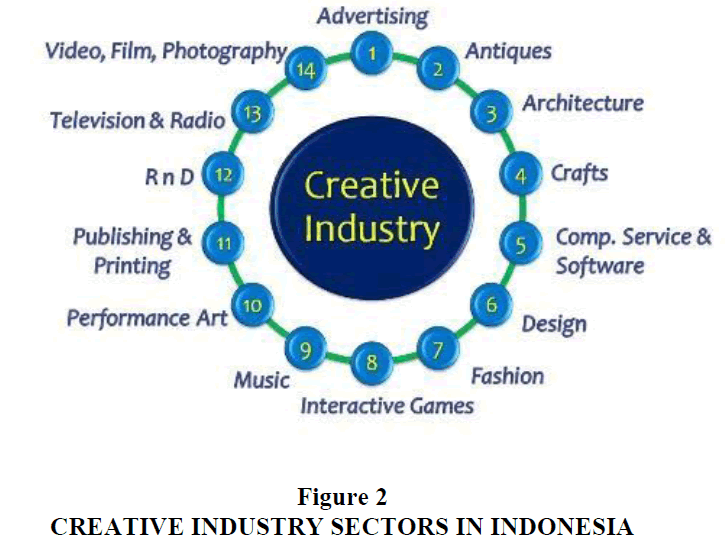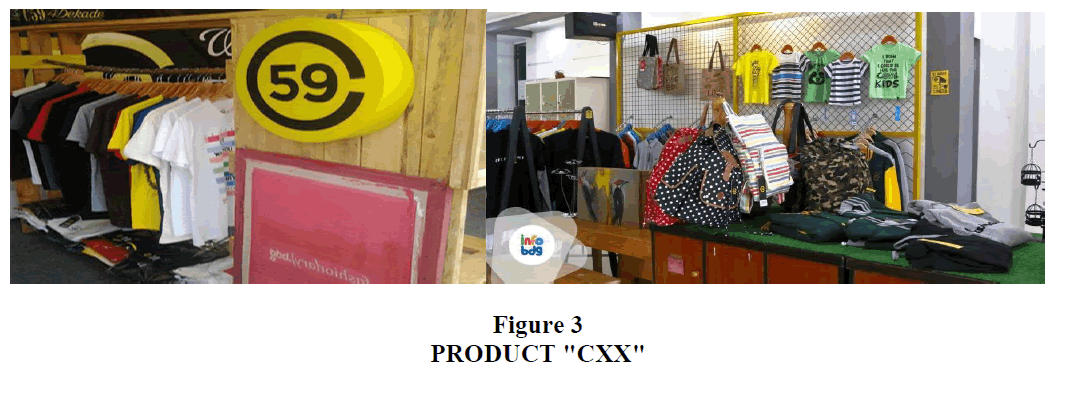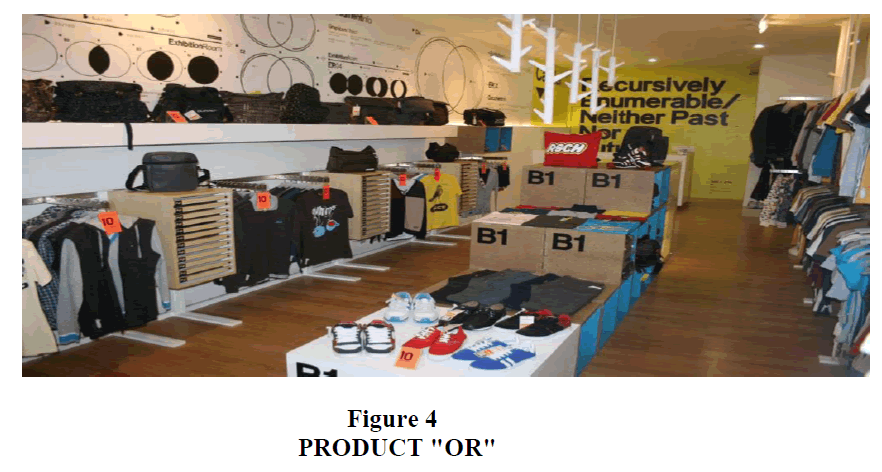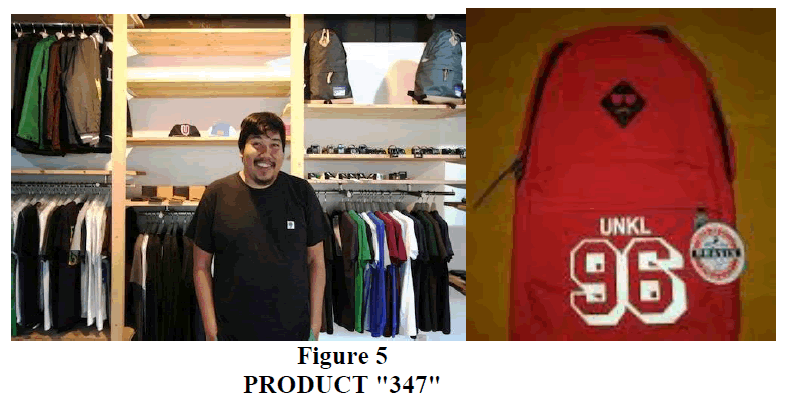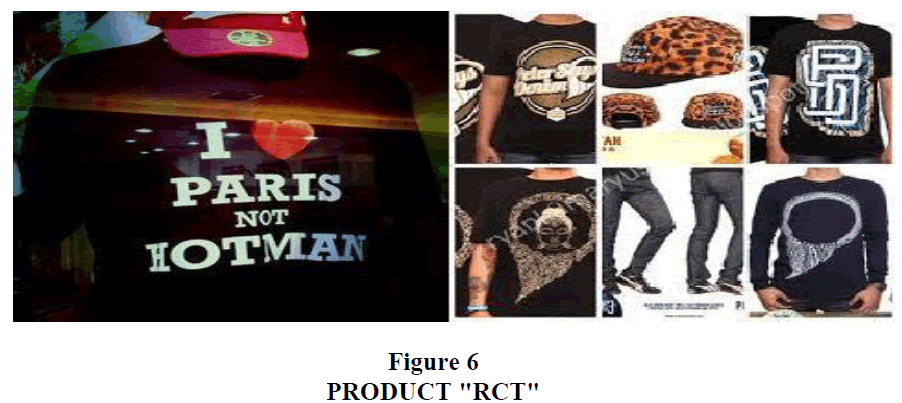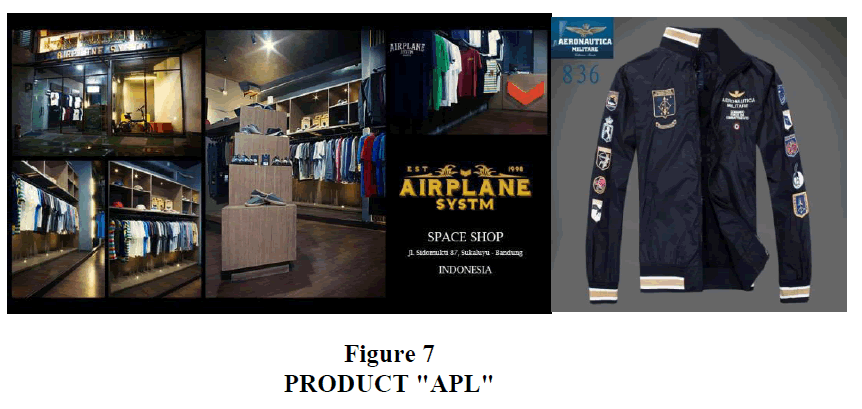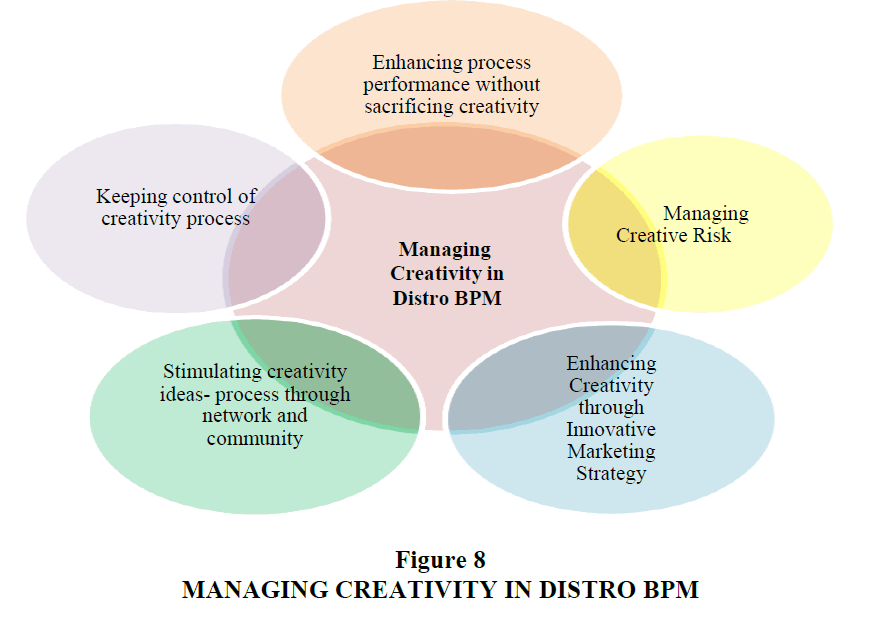Research Article: 2017 Vol: 16 Issue: 2
Coping with Challenges Creatively in Distro Industry for Business Sustainability
Elvy Maria Manurung, Parahyangan Catholic University
Keywords
Distro, Creative Industry, Managing Creativity, Sustainability.
Introduction
Bandung is one of the cities with the best entrepreneurial climate in Indonesia. Every year, there are thousands of young entrepreneurs born in this city, and most of them start their business in culinary and fashion. The growing number of high school and university students in Bandung-known as a city of students-come from various regions of Indonesia, making it a multi-cultural city with high creativity from its young population.
The creative industry in Bandung has long been growing and developing, since about 30 years ago. The city of Bandung has several creative centers such as graphic design for print media, for t-shirts, and for advertisement media (banners, billboard, etc.) run by young entrepreneurs in small and medium-sized businesses. The process of creating a thriving design in Bandung is inseparable from the creative ideas of its creators including creative young entrepreneurs. The preliminary study (Barlian, Manurung, Nawangpalupi, 2014) showed that there are very close relationship between creativity, urban climate, and entrepreneurship. This relationship seems inevitable among young entrepreneurs in this city.
Technology on the other hand also plays an important role in maintaining the continuity of creative business, due to rapid business climate change from time to time. In addition, young highschool and university students in Bandung are really fashionable. They have their own taste and tend to be comfortable wearing fashion trends that they create. Since the era of colonial (HIndies, 1920), Bandung, known as the city of flowers and 'Paris Van Java' is indeed a trend axis for fashion style. Bandung is one of the cities in West Java that has potential and creative young people as much as 60 percent of the total population (Kamil, 2013).
Researches on creative industries in Bandung have been done, especially in the field of fashion. However, few still focus on the creative process and management of creativity. Some quite prominent researches are done by (Kanji, 2010; Arfan, 2014; Fitriyana, 2011). Research on the development of distros in Bandung was performed by Remi Kanji in 2010. Kanji found that the development of distro is rapid because the creation of design and production processes is done locally, while sales can occur locally, regionally or even internationally. Increased sales of distro product cause employment uprise (Kanji, 2010). Bandung, named as one of Asia's creative cities, that develops through the collaborative power of the community, has been studied by (Fitriyana, 2011). Another research about fashion in Bandung was done by (Arfan, 2014). Arfan founds that appearance becomes very important for fashion users and identity representation an important factor in the selection of fashion.
Another research result on fashion industry in Bandung show the real evidence of rapid development of fashion industry in Bandung is the rapid growth of FO (factory outlet) and Distro (distribution shop) as a textile product distribution agency that relies on creativity. Design, diversity of raw materials, brand specificity, and product uniqueness are key success of creative fashion in Bandung, beside its existence of textile industry the fashion industry includes the use of textile materials processed into final products such as shirts, jackets, pants, and similar products. However, the development of fashion creative industries in Bandung faces several obstacles, identified as follows: (i) The level of competition in the domestic market is getting higher, (ii) fashion industry in Bandung are mostly small and medium enterprises (UMKM), with limited access to financial and technological resources, resulting in a poor quality product, and (iii) the development of strategy of the fashion creative industries in Bandung still runs independently and has not made a scale of priority of the aspects to be developed, so it seems sporadic and unsystematic (Suryana and Setiawati, 2009; Anggoro, 2009). Not all local authorities have a master plan or blueprint for the development of creative industries (Furqan, 2010; Rofaida and Krihna, 2016)
The growth of micro, small and medium enterprises of fashion industry in Bandung is very rapidly and thus the industry has to face the growing competitiveness challenge. Siswanto and Maulida (2014) propose the implementation of ERP is considered to be a strategy to support sales growth, increase management ability, enhance marketing network and also strengthen the company competitiveness. In order to be effectively implemented to achieve the goals, the ERP modules requirements are necessary to be identified based on the business process in the micro, small and medium enterprises of fashion Industry. The fashion industry has a contribution to the economy and become a locomotive in the development of creative industries nationwide. However, Indonesia development of fashion creative industry is experiencing less favorable growth, which in a period of more than 5 years tend to fluctuate. This indicates that business performance of the fashion industry tend not optimal. This condition related to some problems in developing competitive strategy (Auliana, 2016). Another study that examines ICT adoption on market capabilities in fashion industry also provides justification and recommendations for government and lawmakers to foster the growth of SMEs fashion industry in Indonesia by building more IT-related infrastructure and developing necessary skills to enhance SME business performance. (Siswanto and Maulida, 2014; Setiawati, Hartoyo, Daryanto and Arifin, 2015).
The fast fashion apparel industry due to its particular characteristics such as short life cycle products, volatile demand, low predictability, high level of impulse purchase, high level of price competition and global sourcing. A system dynamics model is proposed for analyzing the behavior and relationships of the fast fashion apparel industry by Mehrjoo and Pasek (2016). They initiate multiple business situations for effective strategic planning and decision-making are generated to satisfy customers? needs in the shortest time to satisfy customers? needs in the shortest time (Mehrjoo, Pasek, 2016).
Through Kanji's previous study (2010), it was found that even though the distro emerged from the antimainstream movement--the punk?ism--by young generation who liked playing music at the time, the distro, which is a fashion industry of t-shirts-jackets and other accessories, is a strategic industry in Bandung. From fabric production to the distribution and the sales, all occur in this city. (Kanji 2010) offers some ideas from his research on five main factors affecting the development of distro business in Bandung: Traffic, Reliance On Trends, Government Policy, Simplifying Export Process and Accessibility. These five factors are directly related to the business process practices undertaken. This leads the distro business, namely the manufacture of clothing with limited number and constantly changing designs, to become a growing business in Bandung.
From Kanji's research, it was found that distro is a strategic industry in Bandung, and will become a growing business in the city. Increased sales of distro product cause employment upraise. Kanji predicted, with support given by local government distros will soon become a firm and main player fashion industry. Creative industry in Bandung has long been growing and developing especially in fashion industry, since about 30 years ago. Bandung is one of the cities in West Java that has potential and creative young people as much as 60 percent of the total population (Kamil, 2013).
Literature Review
Creativity
Creativity is the basis of today's economy and industry. It is an intangible asset that is proven to produce unique, valuable and meaningful products and services. Creativity is inherent and possessed by individuals who make them "geniuses" (Bilton and Leary, 2002; Boden, 1994; De Fillipi 2007). The definition of creativity is then extended not only to individuals, but also to processes within organizations or institutions.
Creativity is seen as essential for social and economic growth (Florida, and Goodnight, 2005). At the individual, team, and organizational levels, creativity is seen as a core enabler and contributor to entrepreneurial performance, growth, and competitiveness. Creativity becomes a research area that has evolved over the years. Historically, creativity has its roots in the field of psychology that is the conceptual and empirical foundation, which focuses on the factors that increase or inhibit creativity in different areas.
Florida (2002) even mentions a creative class or group-made up of creative individuals- as the driving force of economy. In his book "The Rise of the Creative Class and How It is Transforming Work, Leisure, Community, and Everyday Life", Florida outlines the idea of three major components that must exist in a creative class, namely 3T: (i) Talent, (ii) Tolerance, dan(iii) Technology. Florida explains that the existence of educated talents in a region and the interrelation between them in the process of value creation is the first factor of power. The second factor is the culture of openness, diversity, and inclusiveness that allows each talent to socialize with one another. The third factor is that the level of use and the presence of technology in a region also determine the creation of creative class. The creative process is a repeated process involving discovery and searching, the solving of new problems in various ways.
Creativity as an outcome is defined primarily in management as the exploration of ideas, solutions, and processes, which are novel and useful. The novelty and the usefulness of both are seen as important conditions for something to be seen as creative. So even if an idea is higly novel, if it is not useful or worthy, it cannot be viewed as creative. This definition differs from some work in psychology especially one that focuses on brainstorming, where creative outcomes are often defined in terms of originality, fluency/eloquence (number of ideas), and flexibility. It is interesting to study creativity process in creative industry sector through its business process management (Manurung, 2017).
Business processes that involve creativity differ from conventional business processes in many respects: they have a low level of repeatability, typically are high value-add processes and knowledge-intensive involve creative persons, have a high demand for flexibility and are characterized by particular (creative) risks. The aim of their study is to ?manage creativity without sacrificing creativity.? Seidel et. al. summarize different facets under the term creativity- oriented business process model (BPM). Figure 1 provides an overview about the key requirements of such processes.
The framework in Figure 1 proposed the idea that when managing creativity-intensive processes, it is necessary to distinguish two main perspectives: (i) task-level or activity-level analysis, and (ii) process-level analysis. The task-level perspective pertains to the questions of how pockets of creativity are characterized and how they can be supported. The first and second keys required are allocating resources (task-level, process level) and allowing creative freedom that comprised of both creative and non-creative tasks. The particular creative tasks are resource and time-intensive. Thus, the owner has to decide what resources-budget, equipment; creative individuals-- have to be allocated to what task. She/he has to deal with a quite complex situation: First, it is necessary to identify where the actual creative tasks are within the process and how they integrate into the process. Second, the owner needs a good understanding of how the task is characterized (who should be involved, what capabilities are required, what communication is required, is the task knowledge intensive? etc.). Third, the owner has to estimate the impact of the task on the overall process performance considering what can be referred to as the task?s creative impact. Based on this, she/he can decide how much time, budget, and freedom are granted to alter process and product.
The third and fourth keys required is enhancing creativity (task-level) and keeping control of creativity process. After having identified a task with particularly high creative impact, the owner may want to enhance the quality of the creative product as the core output of that task. The typical questions are: Should creative people meet face to face? Should we include a brainstorming session? Should we provide access to a knowledge base? All these questions depend on the characteristics of the creative tasks (who are involved, what type of creative task, etc.). Creativity could relate to the generation of a new idea, the evaluation of alternative proposals, or a selection process. The third key required is managing creative risks (task-level, process-level). Creative tasks are inherently connected to high variance of possible outcomes, which is due to the fact that being creative means to be original and come up with novel ideas and solutions. This may lead to unwanted consequences, such as losing control of process (losing control of time and budget), low product quality-which may lead to customer dissatisfaction, and lack of external compliance-which can lead to a loss of reputation or even to lawsuits.
The fifth and sixth keys required are enhancing process performance (process-level) without sacrificing creativity. As mentioned earlier, creativity intensive processes are characterized by a high demand for flexibility. That is, conventional process automation approaches such may not be appropriate. However, processes may be comprised of both well- structured parts and pockets of creativity that may not have any obvious structure at all. Identifying and better understanding these pockets of creativity therefore allows for designing an IT solution that can provide a maximum level of automation where it is suitable. Seidel, et.al. Summarize different facets under the term creativity-oriented BPM for the case of film industry. While this research was conducted in clothing (distro) industry which is probably not the same framework with Seidel, et.al. Proposed.
Creative Industry
Since 1998, discussions on creative industry have been increasing. This marks the close relationship between culture and economic policy. The creative industry is recognized to have contributed significantly to the state revenues. In the United States, in 1999, the R&D sector generated revenues of more than USD 2.2 billion. While in Japan, in 1996, the creative industry developed even more in the face of its economy recession (Cave, 2000; Howkins, 2001; Wong, and Gao, 2008).
Creative industry occupies a strategic position in the recent industry development in Indonesia since it was able to survive during financial crisis in 1997 and 2009. Data from the Ministry of Industry and Trade in 2011 showed that the fashion sub-sector provided the highest contribution, reaching 43 percent, and the employment rate calculated from the labor participation rate occupies the highest percentage of 51.8%. The total contribution of the creative industries sector to the national income was 641.8 trillion and created job vacancies for 11.8 million people (Ministry Of Tourism and Creative Economy, 2014). The creative industry began to emerge since 2011 when the Ministry of Creative Economy and Tourism was formed based on Presidential Regulation No.92/2011. Ministry of Trade Republic of Indonesia (2007) defines creative industry as, "An industry derived from the utilization of individual creativity, skills and talents to create welfare and employment through the creation and utilization of creative power of individual"
In January 2015, based on Presidential Regulation No. 6 of 2015, the creative economy was eliminated from the Ministry of Tourism and stands alone ever since as an institution under the President: The Creative Economy Agency (BEK). Based on valid data, there has been an increase in the export of creative products. Its contribution to GDP was 8% in 2013 from 6.9% in 2012. The number increased to 10% in 2014, and will be 12% in 2019 (Kreatif, 2015-2019).
There are six groups of creative industries in Indonesia according to the Ministry of Industry (2014) which are categorized as follows:
? Group of Publication and Presentation Industry: Publishing, Printing, and Advertising
? Group of Culture-Contained Industries and presented Through Electronic Media: TV, Radio, Film, and Photography
? Group of Culture-Contained Industries and presented to Public: Music and Performing Arts
? Group of Art and Culture Contained-Filled Industries: Handicrafts and Art Goods The grouping of these creative sectors is described in Figure 2.
Bandung, a creative city with the greatest creative potential of human resources, is the largest city of creative industry in Indonesia, especially for distro, culinary, textile, and other creative products. Distro, stands for distribution stores or distribution outlets, is a shop, which sells clothes and accessories, or even produces them. Distro is generally small and medium clothes industries, which independently owned and developed by among young people. The products produced by distro sought to be produced in big volume, in order to maintain the nature and the exclusiveness of the products and handicrafts.
A research on distro industry conducted by Limakrisna, et.al., found that business performance of distro as small medium enterprises in the city of Bandung is not optimum. This less optimum performance of SME?s distro tent to be caused by the inappropriately SME?s distro do the relationship with buyers, relationship with suppliers, and relationship with complementary products, it is also because less entrepreneurship oriented. They conclude that entrepreneurial orientation, buyers? relationship, suppliers relationship, and complementary products relationship carried out by the entrepreneurs can lead the high business performance of distro entrepreneurs (Limakrisna, Sudarso and Daryus, 2015).
The distro industry stems from the struggle of the suburban and punk expressions against the mainstream culture (Uttu, 2006). Several subsequent distribution groups appeared and were commercialized. In fact, it is possible that these commercial distros move on to designs that are more closely related to mainstream culture. Without having to 'sell out' some distros just survive with connectivity to music industry that started its recording with an indie label. Kanji's research shows the existence of reciprocal and mutually beneficial relationships between distro and the supported indie labels and the sale of music CDs in their stores/distro. A research on how additive manufacturing has become an increasingly more affordable and capable technology during process design over the last decade on distro, have conducted by Catina and Castonguay (2015). They found that new technology improves in accuracy, speed, efficiency, and affordability. The use of additive printing allows for flexibility within the design process, lower costs for manufacturing, and faster and more accurate testing. The ability of this technology to produce parts with many alloys allows for engineers to develop new innovations that can be used in real-world practice.
The concept of distributions began in the mid-1990s in Bandung. At that time, independent bands in Bandung tried to sell their merchandise such as CDs, tapes, t-shirts, and stickers other than the places they performed the show. Early forms of distro were home-based businesses. Showcases and shelves were made to sell t-shirts. Distro, the short form of ?distribution store? or ?distribution outlet?, is a type of store in Indonesia that sells clothes and accessories put by clothing makers, or produced at home. Distro is generally a small and medium industry (IKM) that bears an independent brand developed by young people. Products produced by the distro are endeavored not to be mass-produced, to maintain the exclusive nature of the product.
Clothing is a term imposed for companies producing apparel under their own brands. In other words, clothing is a category for brands that exclude apparel products. Most of these outfits are t-shirts, and now they are growing to be a variety of lifestyle equipment such as sunglasses, watches, mp3 players, and so on. Distro itself comes from the word distribution store/store distribution. So it can be interpreted as a store that specializes in distributing clothing products. Distro outside Bandung at the beginning is a shop that specialized in selling products from bands D.I.Y/indie band, ranging from albums to merchandises such as t-shirts and other band accessories. Then, there are also distro that sell products such as equipment and skateboarding shirts for certain communities.
In Indonesia, precisely in Bandung, the first distro was opened to sell products from overseas bands, especially underground bands as well as supplies and apparel for skateboards. The first distro to sell products from local clothing is Anonymous, then Flashy and Cynical md in Jakarta. Today, the term Distro is known as a store/retail specializing in selling local clothing products as well as local indie band merchandises. The term local clothing itself begins with the establishment of 347 Boardrider.co in 1996 (now "347/eat"). Clothing takes its name from its first location located at Dago Street No.347, followed by "Ouval Research" in 1997 (although initially had been pioneered by one of its founders, Arif Maskom in 1993 with the release of M Clothing). Afterwards, there are Airplane, Harder, No Labels (NL's), Monik, and Two Clothes which stood 1998. What worth noticing is that, although earlier many brands of local clothing/fashion have spreaded, the term clothing and distro was just known in our country when popularized by the above brands? Later, the term clothing and distro progressively developed into a single category because of the existence of soul and character that can distinguish them from others (Situmorang, 2014).
Analysis and Result
Document studies show that started from more than 15 brands in 1994 namely Rtc, Ann, Fy, Cy. md, Hrd, Rvr, MC, 347, Rct, NLS, Apl, OR, CXX, 3Sc, etc.; now it?s only five major brands left. From five brand distros that lasted until 2015, only three of which available for interviews. The five brands have their own history and experience as shown in Table 1.
| Table 1: Five Lasting Distro Brand | ||
| Brand of Distro | Owner, Manager | Work experience |
|---|---|---|
| ?CXX? | W and K | Sales Manager for C59 in the 90s, now has its own company engaged in merchandising, in cooperation with national and local companies |
| ?OR? | RFA | Distro player |
| ?Apl? | FS, H&C | Distro player |
| ?347? | DD, AA&L | Distro player |
| ?Rct? | SS | Owner of "Rocket", a distro that has the concept of uniqueness in words, in Pondok Indah Mall, Jakarta |
Distro is a creative business that has a quite short product life cycle. Some distro business that still survive and even developed until now in Bandung are among others CXX, OVL, 347, Apl, and Rct. Rctt has been more than a decade old. They thrive because the uniqueness and innovation of the product is done continuously.
Some examples of these distro products are shown in Figures 3 to 7.
Some excerpts of interviews with distro owners and managers in Table 2 of the constraints experienced in their business operations from establishment to the present are described below.
| Table 2: Business Profile | |
| Brand of Distro and Business life time |
Business Characteristics and History |
|---|---|
| ?CXX?, 37 years | Beginning with t-shirt printing (sablon T-shirt), CXX garment business was managed by a couple name W and M. The name CXX was taken from the business address on C-Street. With initial capital of IDR 2,500,000 from their wedding gift, they bought 2 units of sewing machines and 1 unit supporting machine. The rest was used for working capital, purchasing raw materials and paying wages. CXX initial business was serving orders of pictorial T-shirt, the technique of which in the 1980s was still manual workmanship, not with using computer. Only in 1985, CXX began to show superiority in terms of materials, types of screen printing, and color separation techniques and the product got to be recognized in Bandung and Jakarta. In 1990, CXX expanded and built modern factories and facilities, together with the construction of its first showroom in Bandung. The period 1993-1994, CXX legally changed into Limited Company with W as the President Director to date. Today, CXX has expanded into several cities in Indonesia, collaborating with several Department Stores as the distribution channel in Jakarta, Balikpapan, Yogyakarta, Ujung Pandang, Lampung and Malang. Exports have already been done, among others, to Singapore, Malaysia, Brunei Darussalam, Australia, Germany, England, Czechoslovakia, America, France and Japan. Company behavior also experienced a change from a family company to a company managed by professionals. This ultimately makes the company more flexible in making decisions, as well as more rational and fast in performing every action. |
| ?Rct?, 30 years | "Rct" was initially established by SSto seek money pocket. Like a byproduct of other distros, Rct has a clear concept from design perspective, not merely tracing or design from outside. Rct had suffered bankruptcy even almost closed due to one marketing strategy. Funds that have been spent great enough to establish branches outside the island were not necessarily offset by sufficient income in the new branch. However, having been despaired due to loss of hundreds millions dollars of hard work many years, the owner did not lose his mind. Rct then rose with fresh creative ideas. The Owner tried marketing surveys and updating with the latest developments. The political situation and news in the media were used for strategy formulation to win the market. Rct finally reappeared with a new face. With main branch at Pondok Indah Mall Jakarta, Rct was able to stand in line with other clothing business, because it?s unique characteristics. In addition, Rct does not want to play in mass production; he wants exclusivity from the production side. Each design for one product is released only in limited quantities (usually between 50-150 per design). That's what distinguishes Rct distro with other clothing/distro business. |
| ?Apl?, 20 years | When the economic crisis occurred in 1998, the band "Rvr" which was the embryo of the distro Apl had a difficult time until finally closed. They could no longer buy goods from abroad because the value of dollars against the rupiah soared and unreachable. However, this difficult condition actually gave birth to a new phase in the development of Bandung clothing industry. The owner of "Rvr", then built a clothing label called "Apl" which started his business in 1997. Not only that, along with D and M, the owner built a record label called FF in 1999. "Apl" was originally established with two other colleagues, F and C, officially established on February 8, 1998. "Rvr" at that time became a gathering place of communities from different scenes. Punk, hardcore, pop, surf, bmx, skateboard, rock, grunge, all can meet in that place. PAS and P are some bands that had been raised by the "Rvr" community. The manager had formed an independent label record whose first release was a compilation album in 1997. The bands that participated in the release include BK, PAS & P, Pp, RTTC, FOH and WR as the only band from Jakarta to be included in this compilation. |
"At first we were not able to buy imported goods because they were expensive and due to monetary crisis. At that time, we thought, ?we did we want to make? because if you buy, there was no match. If we want a particular shirt, there wasn?t any. If we want a particular T-shirt, there wasn?t any...Initially, from there; we make our own definite design with each background. All were influenced by the everyday life we enjoy...Usually, after skateboard, we played music, and then it affected the clothing design graphics. Finally, the results ended up various. Beginning in 1996, from the house on D-Street No.347 Bandung, we pioneered this business with product mostly for own use.... Just like the 347, Airplane also started the business from the owner's hobby, skateboarding "(FS, 2014).
"Distro grows out from community. So, in terms of marketing, they are unique, so the exhibitions of local products of distro will be required for them, especially for the newly developing distro". (K, 2014).
"In Indonesia, Bandung in particular, we are familiar with "congregational" business. If there is one entrepreneur opens a distro, other entrepreneurs rush to open distros on the other side with models and designs that are intentionally made similar. "(SS, 2015)
"I must be willing to be "disturbed" for 24 hours to serve every customer. I gave total commitment to C59, so the business can survive until now. School students and college students are the main targets for sales. If one is satisfied with the C59 product, he will always remember and come again and again....C59 seeks to establish a moral bond to its customers "(W&K, 2015).
From the results of interviews with some distro managers above, it can be seen the idea of distro emergence in Bandung that came from just a common hobby of music or exercise. Community becomes important for the growth and development of distros in Bandung. This community usually consists of a group of young people who share the same hobby. Nevertheless, there is a risk of design similarity between one distro product and others, as revealed by SS. This is an obstacle as well as a challenge to keep looking for uniqueness.
"The Indonesians want an item that resembles overseas goods, so the brand of distro that quickly adjusts the trends that occur overseas will have faster and bigger market absorption" (K, 2014).
"In Indonesia, it is difficult to eradicate counterfeiting or piracy. Not only in the city, but in the areas are also very many forgeries. Another thing is the unpreparedness of producers, especially in terms of business capital, in meeting the needs of many consumers. High demand will be taken by entrepreneurs with large capital and it is not impossible taht they will do the forgery". (K, 2014).
Constraints such as impersonation of ideas or product design as expressed by SS again explained by K, former manager of C59. In addition, consumer behavior is also difficult to guess because it is still much oriented to fashion trends from abroad. Thankfully, nevertheless, the city government of Bandung strongly supports the existence of creative youth communities in Bandung, including the distro in it. Creative young people in Bandung became one of the initial capital is enough to determine the development of this industry distro (Kamil, 2015).
"Failure, I believe, is the beginning of creativity development. If yesterday I loss 300-400 million, tomorrow or next week, I can profit 1 billion...No problem. What is important is, I have to keep searching and finding new ideas for my shirts "(SS, 2015).
"Manufacturers must have a creative side not only from the idea or in terms of production, but also the marketing aspect - How to think about distribution channels so that the distribution business can survive. Distro grows out from big community with good creativity. "(K, 2014).
"The key to the success of distro in Bandung is the high creativity and large number of human resources with many competences. The more creativity the more designs created. Each distro must have a minimum design of 100 pieces." (FS, 2014).
"We must always be observant and 'catch' the discourse that is taking place in the community...for example when the case of KPK is hit, Rct made a limited edition about it. The result is success...T- shirt runs out! In addition, we make a super-large shopping bag up to the size of a small child, with big RCT writing. This is done to attract the attention of people/consumers in Pondok Indah Mall Jakarta" (SS, 2015).
The next idea about the development of distro industry in Bandung is the creativity factor possessed by young people in Bandung, which generally are still students. They have many creative ideas for product design, marketing strategies, and so on. Without it, the business of this distro is unlikely to run for decades. Some even have reached the age of business almost 40 years.
"Business does not need sustaining! Children and grandchildren should not be bothered to think about how to maintain or develop their parent businesses. Let them be free to choose what they want to be, entrepreneurs or not. And if they choose to be entrepreneurs, they should be freed to choose which business to be in. I pioneered the distro business since I was a student at ITB, but I free my children to be anything they want. Creativity should not be forced."(SS, 2015).
The above quotes from interview with SS show that creativity need not be imposed or descended. Creativity requires an open and flexible "space" that keeps people inside from being forced or depressed to do so. Climate like this is sought by young people in Bandung to pioneer and develop their business in town. Good climate or atmosphere in the city is also a key success in the growth and development of Bandung that is based on creative ideas and product innovation on an ongoing basis. Product development is the main core of the competitive advantage of a distro brand. This is because distro products are reactive to trends that occur at one particular moment. Different from film industry, distro industry requires suitable climate to stimulate their creative ideas and process while producing their competitive product. Another important factor is niche market for distro industry. As mentioned in case study of distro industry in Bandung earlier, the buyers come from music community and skateboard players, so a new marketing and innovative strategy need to apply. That is why a new framework that emphasize on network and community should apply to business process management in distro industry.
This ongoing creative process is developed not only in product and packaging design but also in marketing. The right segmentation strategy and pointing to a particular niche keeps the customer loyal and royal to the distro brand offered. Management capabilities must also be upgraded so as to adapt quickly to changes in technology and business change. Most distro managers whose business scale is limited to small or medium scale do not consider this important. Instead, they assume that the most important is sales.
Conclusions and Recommendations
Based on analysis and results this research proposes a new framework for business process management in distro industy. This is required due to its niche or segmented market and conducive climate that needed by distro industry in Bandung. From the creativity-oriented business process management initiated by Seidel, M., et al (2008), this study has found the existence of conforming factors besides new factors found in the observations and in-depth interviews of distro players in Bandung. These findings are shown in Figure 8.
This study findings show that there are three things that fit with Seidel, et.al. Framework in Figure 1. The explanations are as follow:
(i) Performance must be enhanced without sacrificing creativity, which means creativity remains the primary capital for the continuity of the distro business, reflected by novelty of ideas and product uniqueness. In the case of C59 in this study, they are constantly doing research and development (R&D) until now.
(ii) Creative risk must be managed in a way that does not produce large-scale, but only for certain niche that is very fond of the product so that it does not need large financial capital that can harm.
(iii) The process and climate of creativity must be guarded (keeping control) against counterfeiting or piracy through a supportive climate and atmosphere in Bandung, which is always free-thinking and openness to change.
In addition to conformity with the framework of Seidel, et.al. This study has also found two other things that are also considered important as findings, namely
(iv) The importance of maintaining friendships or networks through activities within the community. There are a variety of communities in Bandung which is mainly a community of music (heavy metal) lovers and sports (skateboard) communities. Community friendships will help maintain a fair and transparent climate while stimulating creative ideas and creative process.
(v) The importance of innovative marketing strategies especially in segmented market, not mention, the current era of economic competition in Asian countries. The results of interviews with distro managers in this study show the way taken by SS after the failure of "Rct" to expand its business in the past that threatens his business to be bankrupt. He bounced back with fresh new ideas and innovative marketing strategies.
(vi) This research can be continued using other methods such as quantitative methods to obtain new findings. In addition, the object of research can be developed on distros in other cities in Indonesia.
References
- Anggoro, Y. (2009). Pengembangan Industri Kreatif Clothing di Kota Bandung, Research Paper. Central Library of Bandung Institute of Technology.
- Arfan, N. (2014). Criteria of Choosing Bag of University Students in Bandung on Purchase Decision. Master Theses of Science of Management, Magister Program of SBM ITB.
- Auliana, L. (2016). The influence of competitive strategy on business performance of the fashion creative industry in West Java. Academy of Strategic Management Journal, 15(3), 239-248.
- Catina, J. & Castonguay, K. (2015). Use of additive manufacturing to model and develop advanced liquid propulsion designs: Distro-A: Approved for public release. Paper Conference on Joint Propulsion Conference, Orlando, United States.
- De Fillippe, R., Grabher, G. & Jones, C. (2007). ?Introduction to Paradoxes of Creativity: Managerial and Organizational Challenges in Cultural Economy?. Journal of Organizational Behaviour, 28(5).
- Fitriana, F. (2011). The Development of Creative City Bandung through the Community?s Collaborative Power.Journal SAPPK ITB, Bandung Institute of Technology.
- Florida R. (2002). The Rise of the Creative Class and How It?s Transforming Work, Leisure, Community, and Everyday Life. New York.
- Kanji, R. & Silvey, R. (2010). Distro: Fashion as an Engine of Economic Growth, Research Paper. University of Toronto, and Field School.
- Limakrisna, N., Sudarso, A. & Daryus, C. (2015). Entrepreneurship Orientation for Building Business Performance: An Empirical Study Distro Small Medium Enterprises Bandung City. International Journal of Economics and Financial Issues, 5(Spl.Issue), 144-149.
- Manurung, E.M. (2017). Paradox and Creativity Management in Indonesian Film Industry Published Doctoral Dissertation. Satya Wacana Christian University, Salatiga Indonesia.
- Mehrjoo, M. & Pasek, Z.J. (2016). Risk assessment for the supply chain of fast fashion apparel industry: A system dynamics framework. International Journal of Production Research, 54(1), 28-48. Taylor and Francis Publisher.
- Ministry Of Indonesian Industry, (2015), Buku Rencana Pembangunan Jangka Panjang (RPJP) Ekonomi Kreatif Indonesia 2015-2025, retrieved from: http://indonesiakreatif.bekraf.go.id/ikpro/publication/buku-rpjp- ekonomi-kreatif/
- Rofaida, R. & Yuliawati, A.K. (2016). Competitive advantages of a fashion creative industry in a post Asian- China free trade agreement (ACFTA): A case of bandung in Indonesia, Man in India. 96(12), 5011-5026
- Seidel, S., Rosemann, M. & Becker, J. (2008). How Does Creativity Impact Business Processes?, Conference Paper Proceedings 16th European Conference on Information Systems. Galway, Ireland.
- Setiawati, R., Hartoyo, Daryanto, H.K. & Arifin, B. (2015). The effects of ICT adoption on marketing capabilities and business performance of Indonesian SMEs in the fashion industry. Journal of Business and Retail Management Research, 10(1), 100-115. Academy of Business and Retail Management Research.
- Siswanto, J. and Maulida, A. (2014). Conference Paper, International Conference on Information Technology Systems and Innovation (ICITSI). Bandung, Indonesia.
- Suryana, H. & Yuliawati, A.K. (2009). Pengembangan Model Ekonomi Kreatif Pedesaan Melalui Value Chain Strategy Untuk Kelompok Usaha Kecil (Studi Pada Industri Kerajinan di Jawa Barat) - Penelitian Strategi Sesuai Prioritas Nasional (STRANAS).
- Uttu, (2006). Distro, Inside Indonesia. Retrieved from http://www.insideindonesia.org/edition-85/distro.
